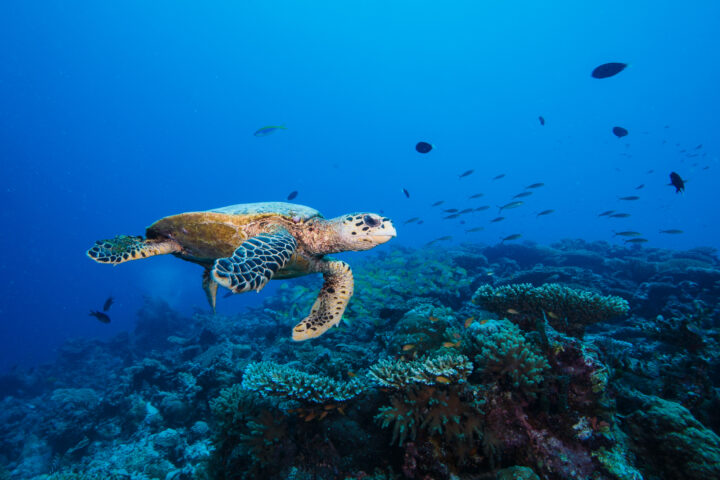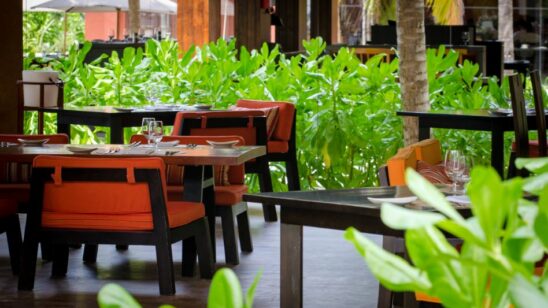
Six Senses Laamu celebrates Turtle Day with identification of 100th Hawksbill
[vc_row][vc_column][vc_column_text]Six Senses Laamu celebrated World Turtle Day with the identification of 100 different Hawksbill turtles on the atoll’s reefs. The 100th Hawksbill turtle has now been placed on the resort’s marine database.
Six Senses Laamu began compiling a database of turtle sightings from the dive and snorkel sites around the Laamu atoll, via a simple photographic identification process, in 2016. It is carried out as part of an initiative launched by the Resident Marine Biologist at the property, through the implementation of a new code of conduct on how to sustainably snorkel and dive with turtles, ensuring that every encounter is a positive interaction and that it does not affect the natural behavior and movements of the turtle.
This identification process allows the Marine team to closely monitor the population of both Green and Hawksbill turtles in the surrounding waters. Due to key members of the team being both dive and photography enthusiasts there are available sighting records dating back as far as 2013. Of the 800+ total sightings, only 240 are of Hawksbills. The most re-sighted Hawksbill is Mia with 20 sightings, said Six Senses Laamu in a statement.
Six Senses Laamu aims to increase awareness of turtles and conservation measures to protect them and the habitats in which they live. Hawksbill turtles play a key role in the coral reef ecosystem. There are few animals that eat the fast-growing sponges due to the toxins in their tissue; therefore they allow coral and other species to colonise and grow in the gaps they create. This maintains diversity throughout the reef ecosystem.
Guests diving or snorkelling on the surrounding reefs are encouraged to take photos of turtles they come across and if they find a newly spotted turtle, they may get a chance to give it a name.
Hawksbill turtles are located worldwide and are easily distinguished from other sea turtles by their sharp curving beak and serrated edge to the rear of their shell. Like all sea turtles, they spend the first 20 or so years of their life in the open ocean feeding predominantly on jellyfish. Therefore when they come to live in coral reef habitats they change their diet and start feeding on sponges, algae, coral, and small crustaceans instead.
Hawksbill turtles are listed as Critically Endangered in the International Union for Conservation of Nature (IUCN) Red List. This is partly due to their shell being used for thousands of years for decoration purposes, but in the 1900s their population was estimated to drop by 80 percent. As air-breathing reptiles turtles are at great risk of drowning in fishing gear. In addition to this, with jellyfish as their main food source in the open ocean, plastic pollution is a major problem. In the present day, they are protected by the Convention on International Trade in Endangered Species of Wild Fauna and Flora (CITES) but much is still needed to conserve populations.[/vc_column_text][/vc_column][/vc_row]





